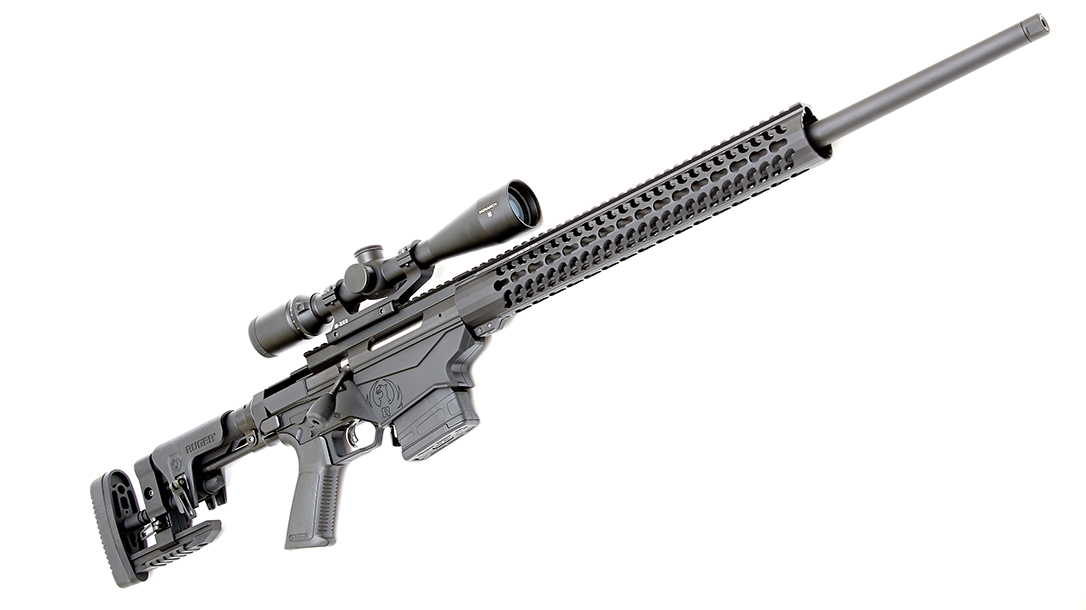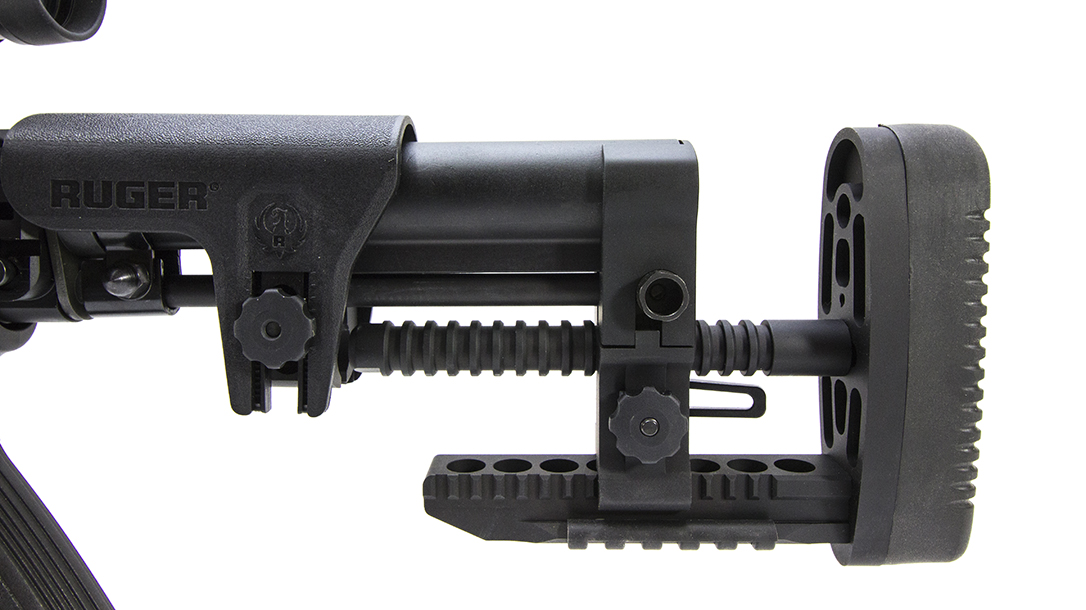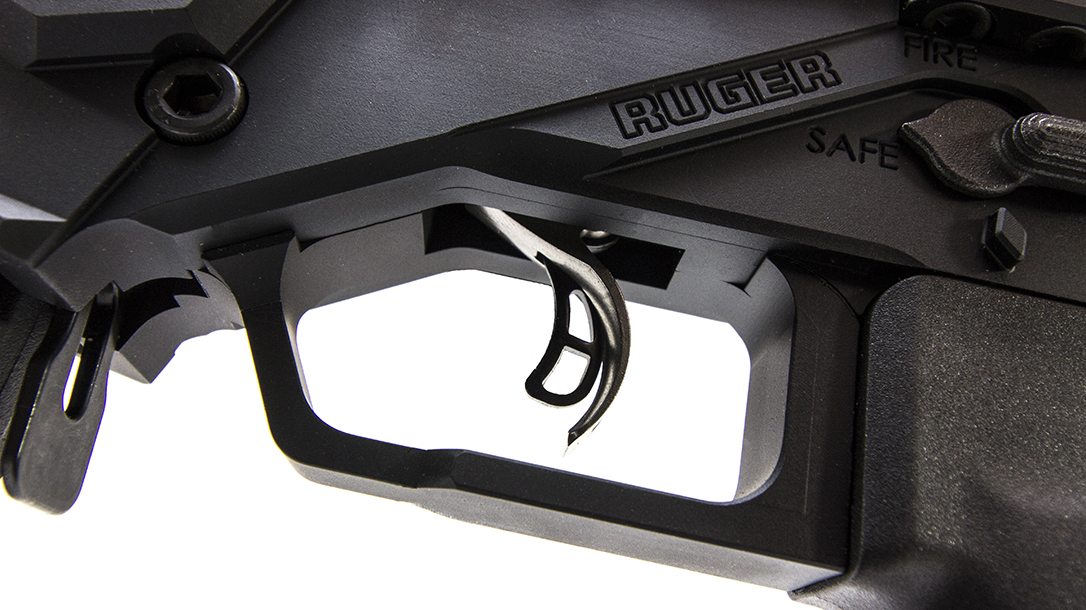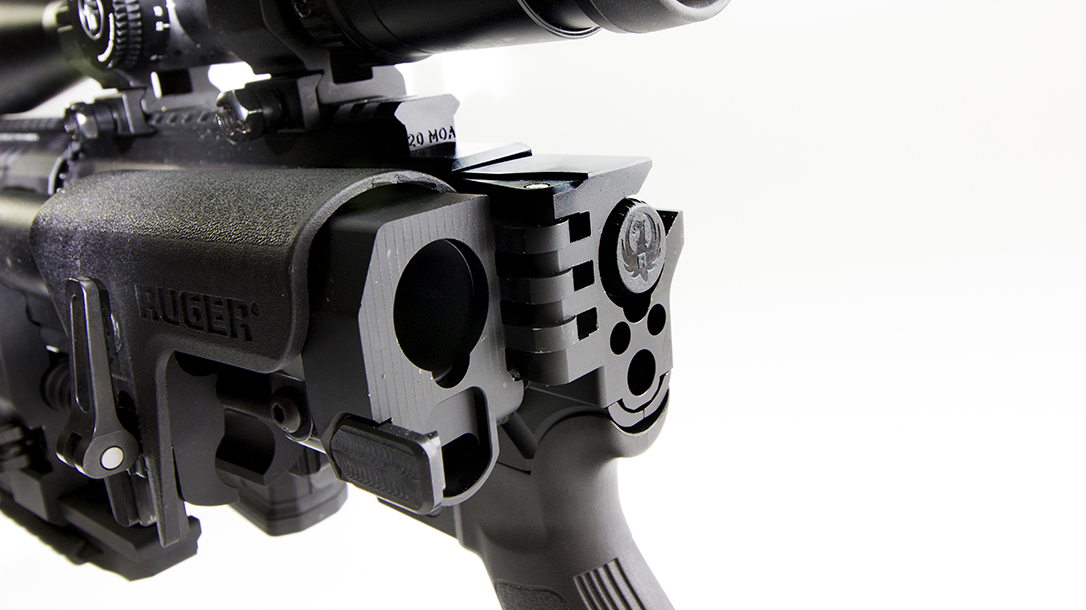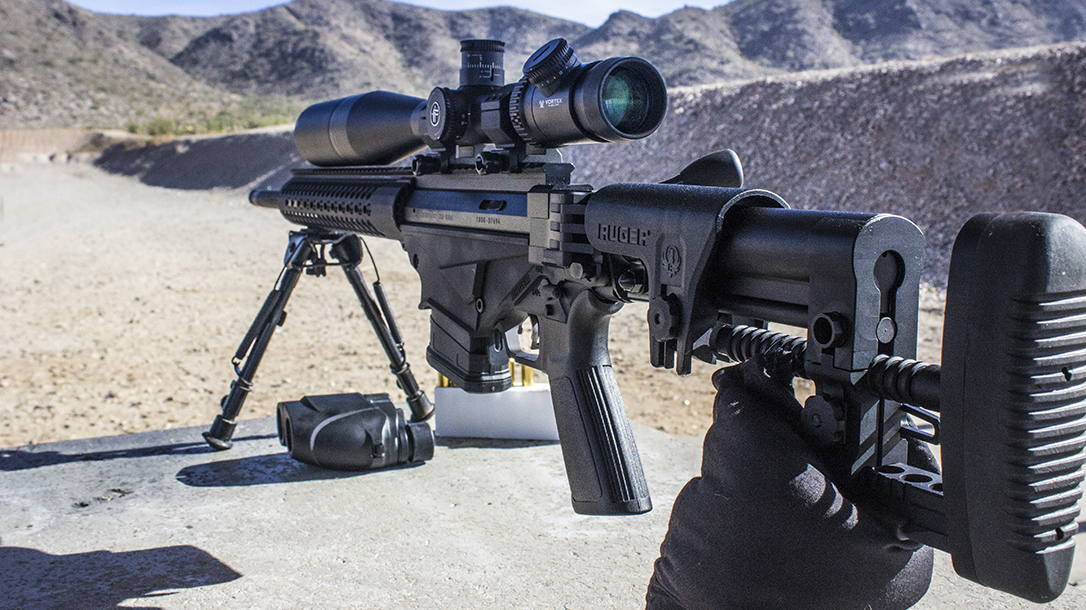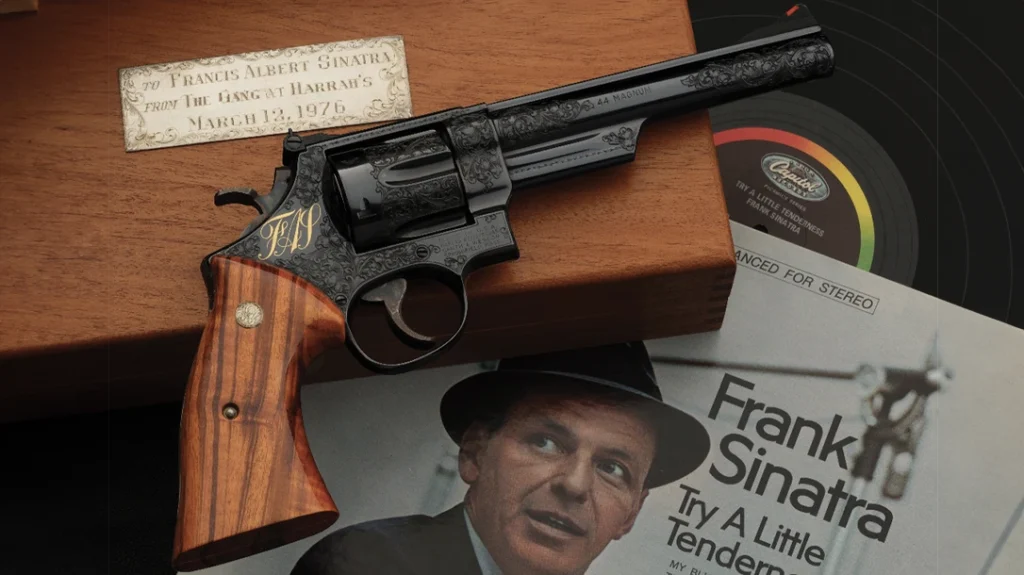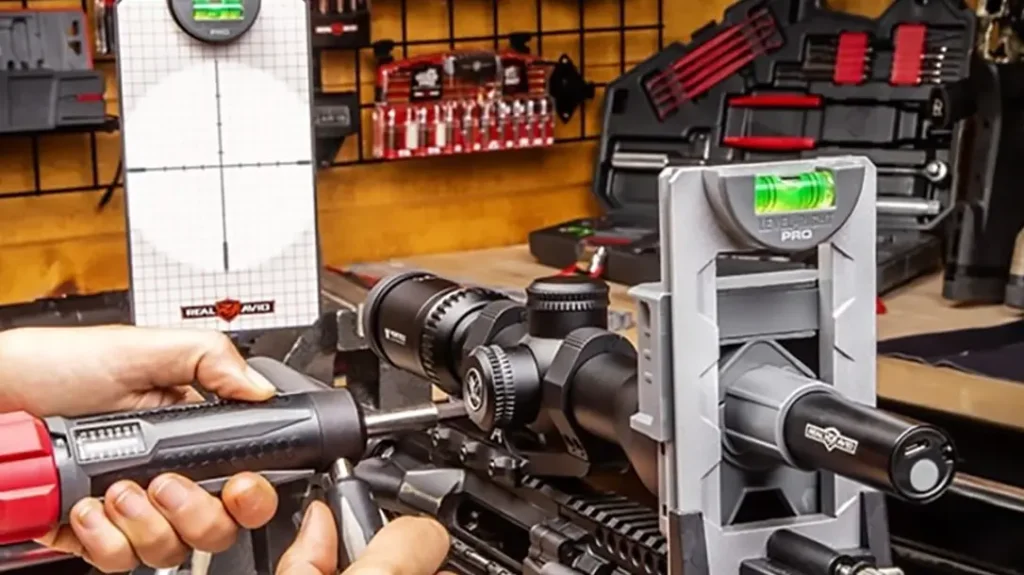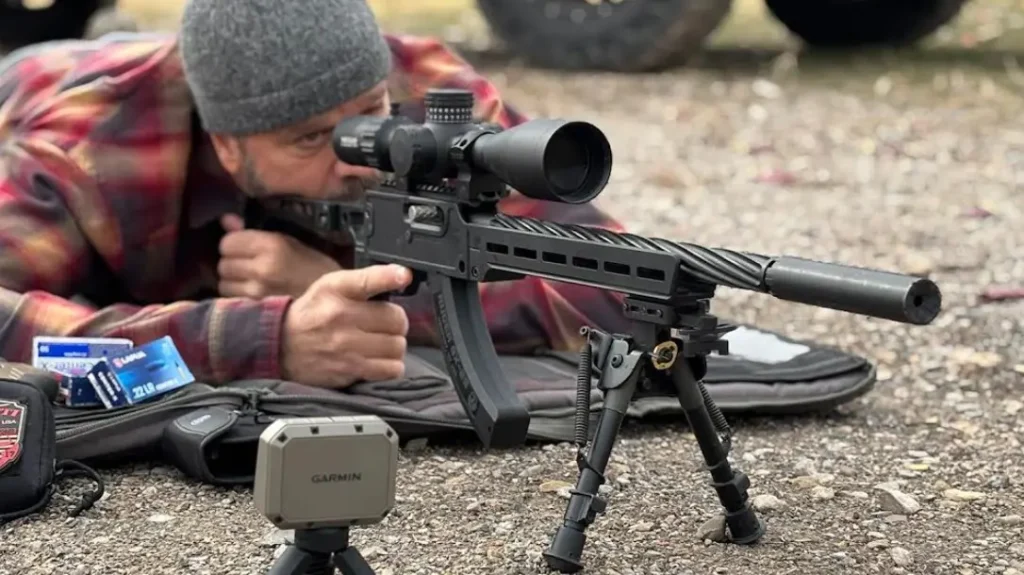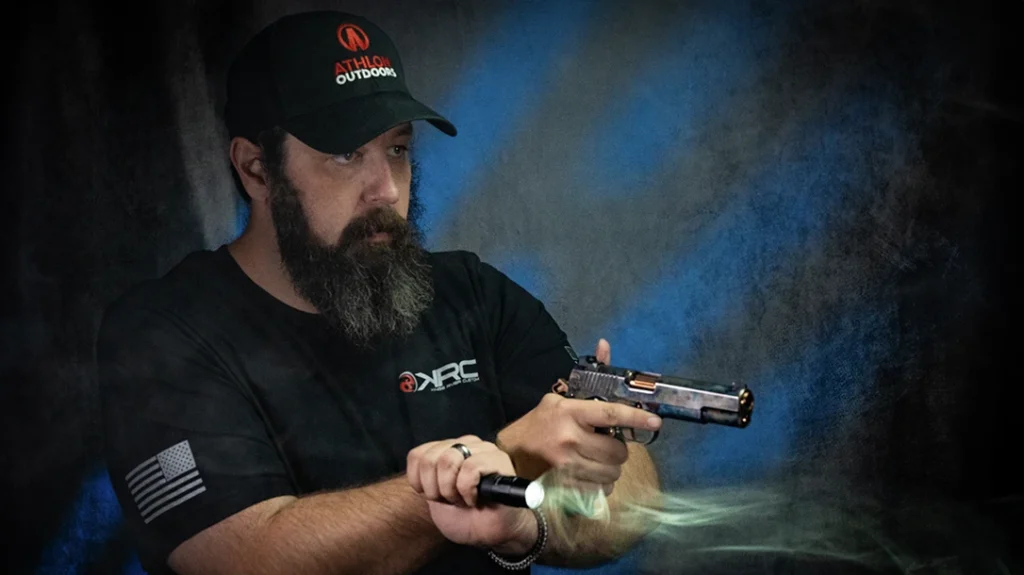The world of long-range precision shooting has seen enormous growth over the last 10 years. The emergence of the Precision Rifle Series (PRS) is a demonstration of that growth.
Started in 2012, the PRS was created to organize a championship-style, point-series race of the best precision rifle competitions and shooters in the nation. The goal was to help increase the popularity of rifle competitions throughout the nation.
Advertisement — Continue Reading Below
The rifles and gear seen at these competitions range from mild to wild, with relative price tags attached. For many, however, the cost of getting into precision shooting has been prohibitive. So many budget-sensitive shooters have tried to push the envelope with off-the-shelf guns. They hone their skills, tweak their guns and dream of someday getting their hands on a custom rifle that would be considered the Ferrari of the shooting world. Unfortunately, it was a dream destined to remain just that for many shooters—a dream. Until now.
One iconic gun-maker, Sturm, Ruger & Company, heard their cry and decided to build a solution to the challenge. The company stepped up to the plate and put its engineers to work. The result that emerged from the workbench is the Ruger Precision Rifle, a modular rifle built on the company’s own American bolt action and promising sub-MOA performance at a price point that is a fraction of many of its competitors. This declaration alone warrants a closer look at this new bolt-action rifle.
UNDER THE HOOD
Advertisement — Continue Reading Below
Ruger offers the Precision Rifle in 6.5 Creedmoor, .243 Winchester and .308 Winchester, and I tested the latter for this article. Ruger designed the Precision Rifle to maintain an in-line recoil path. Felt recoil is channeled directly back through the buttstock. This allows the rifle to avoid the need for any traditional barrel bedding, minimizing interference with the barrel as the gun is fired.
And let me just say, this rifle is a well-made gem from head to toe. The 20-inch, medium-contour barrel on my test rifle was cold-hammer forged from 4140 chrome-moly steel with a 1-in-10-inch twist rate. The 6.5 Creedmoor and .243 Winchester variants come with 24- and 26-inch barrels, respectively, and they all incorporate 5R rifling. This design places a land opposite each grove, which results in less bullet distortion as it engages the rifling. It not only improves accuracy, but the less-sharp-edged lands also reduce powder fouling and jacket failures. All of the barrels feature a 5/8×24-tpi muzzle threading to support the use of a sound suppressor or muzzle brake. My test rifle came with a Hybrid muzzle brake attached.
The upper receiver and bolt are both machined from pre-hardened 4140 chrome-moly steel. The bolt is unique in that a bolt disassembly tool and trigger adjustment hex wrench are included inside the shroud. The bolt is a three-lug design with a 70-degree throw. Ruger also included dual cocking cams for ease of use and smooth cycling. Ruger includes an oversized bolt knob, but the company also had the foresight to thread the bolt handle, allowing shooters to customize it as needed.
Advertisement — Continue Reading Below
Though my test rifle came with a 15-inch Samson Evolution handguard, Ruger is now equipping its Precision Rifles with proprietary, KeyMod-compatible handguards. My rifle’s Samson handguard matched up seamlessly with the upper receiver, which has a Picatinny top rail with a 20-MOA offset for increased long-range elevation capabilities.
The lower receiver is machined from forged, aerospace-grade 7075-T6 aluminum with a mil-spec, carbine-length AR receiver extension. In other words, shooters can install whatever AR-platform stock they’d prefer. But the stock that is included is pretty striking.
The stock folds to the left side and allows shooters to adjust the length of pull from 12 to 15.5 inches. The stock also has an adjustable comb that, like the length of pull, is locked in place with dual cam levers. The buttpad can be adjusted up to 9 degrees left or right to enhance the shooter’s fit behind the rifle.
Advertisement — Continue Reading Below
For mobility, Ruger has built in multiple QD sling-mounting slots, including one on the back of the action for ease of carry when the stock is folded.
Finally, the stock has a Picatinny rail on the bottom for adding a monopod for stability.
Advertisement — Continue Reading Below
The lower receiver is also designed with Ruger’s “multi-magazine interface,” or MMI, which accounts for one of seven patents that Ruger was awarded for this rifle. The MMI allows for shooters to use both PMAGs and AICS-style magazines. Rounding out the rifle is an AR-style pistol grip, a reversible 45-degree safety selector and Ruger’s Marksman Adjustable trigger. Using the included hex wrench, the trigger is adjustable from 5 pounds to as low as 2.25 pounds.
ROUNDS DOWNRANGE
Ruger’s goal was to build a gun with sub-MOA accuracy. Internal testing conducted by Ruger yielded an average of 0.83 inches at 100 yards when using multiple guns. Our challenge then was to bear down and see what kind of accuracy we could squeeze out of this new rifle.
Advertisement — Continue Reading Below
We topped off our .308 Winchester Ruger Precision Rifle with a Vortex 6-24x50mm Viper scope in Vortex rings. We shot the rifle from a bench using a Harris bipod and a sand sock for support. As is the case most days, the Arizona weather was perfect for shooting. Only a mild half-value wind presented itself.
After a brief zeroing period, we began shooting five-round groups with ammunition from Black Hills, Federal Premium and Patriot Munitions. Each load has a solid reputation for performance, and our expectations were high. On a side note, we shot the groups in a staggered manner, allowing the barrel to cool between strings. The goal was to get as close a comparison as possible. And we were not disappointed. Every five-shot group we created downrange was less than an inch wide, with our best group coming from the Federal 168-grain Gold Medal Match ammo. At an incredible 0.75 inches, this was confirmation that the Ruger Precision Rifle is the real deal.
The in-line recoil path made for notably smooth shots with less jump than we see in other rifles. The trigger broke cleanly at just over 2 pounds with a short, smooth reset. Bolt manipulation was a breeze thanks to the oversized knob. It was smooth and effective with no hiccups in cycling. The rifle came from the factory with two Magpul PMAGs, and they worked well. They fed reliably and inserted as easily as they dropped free when they were empty. Overall, the rifle was truly a pleasure to shoot.
Advertisement — Continue Reading Below
Empowered by the groups we just printed, it was time to see if we could make some steel targets sing at distance. With very little effort, we were able to get hits at 200, 400, 500 and ultimately 800 yards. Transitioning between targets was fast and easy. The weight of the gun struck a perfect match between mobility and recoil absorption. The last group at 800 yards showed four out of five rounds within the half-scale silhouette steel. I tried to argue that the fifth round had actually nicked the edge of the steel target, but my compatriots would not allow me to claim a 100-percent score.
Rifles destined for the precision-shooting world easily run upwards of $4,000. This is before you include optics and a bipod, which then put the cost close to a down payment on your kid’s college tuition. Thankfully, Ruger has changed the game. According to the company director of product management, “We wanted to keep the price of the Precision Rifle reasonable so that it would be available to just about anyone.” That goal has been achieved. With an MSRP of only $1,599, the Ruger Precision Rifle offers budget-sensitive shooters an opportunity to enter the world of precision shooting without breaking the bank.
For more information, visit Ruger.com.
Advertisement — Continue Reading Below
This story is from the spring 2017 issue of Ballistic Magazine. To subscribe, please visit OutdoorGroupStore.com.
Ruger Precision Rifle Specifications
- Caliber: .308 Winchester
- Barrel: 20 inches
- OA Length: 39.25-42.75 inches
- Weight: 9.8 pounds (empty)
- Stock: Folding, adjustable
- Sights: None
- Action: Bolt
- Finish: Matte black
- Capacity: 10+1
- MSRP: $1,599
Ruger Precision Rifle Performance
| Load | Velocity | Accuracy |
|---|---|---|
| Black Hills 168 Match HPBT | 2,650 | 0.90 |
| Federal 138 Gold Medal Match SMK | 2,650 | 0.75 |
| Patriot 168 AccuFlight | 2,650 | 0.80 |
*Bullet weight measured in grains. Velocity measured in fps by chronograph. Accuracy measured in inches for best five-shot groups at 100 yards.




